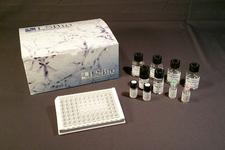order histories, retained contact details for faster checkout, review submissions, and special promotions.
Forgot password?
order histories, retained contact details for faster checkout, review submissions, and special promotions.
Location
Corporate Headquarters
Vector Laboratories, Inc.
6737 Mowry Ave
Newark, CA 94560
United States
Telephone Numbers
Customer Service: (800) 227-6666 / (650) 697-3600
Contact Us
Additional Contact Details
order histories, retained contact details for faster checkout, review submissions, and special promotions.
Forgot password?
order histories, retained contact details for faster checkout, review submissions, and special promotions.
ATP5G3
ATP synthase, H+ transporting, mitochondrial Fo complex, subunit C3 (subunit 9)
ATP5G3 is a subunit of mitochondrial ATP synthase. Mitochondrial ATP synthase catalyzes ATP synthesis, utilizing an electrochemical gradient of protons across the inner membrane during oxidative phosphorylation. ATP synthase is composed of two linked multi-subunit complexes: the soluble catalytic core, F1, and the membrane-spanning component, Fo, comprising the proton channel. The catalytic portion of mitochondrial ATP synthase consists of 5 different subunits (alpha, beta, gamma, delta, and epsilon) assembled with a stoichiometry of 3 alpha, 3 beta, and a single representative of the other 3. The proton channel seems to have nine subunits (a, b, c, d, e, f, g, F6 and 8). This gene is one of three genes that encode subunit c of the proton channel. Each of the three genes have distinct mitochondrial import sequences but encode the identical mature protein. Alternatively spliced transcript variants encoding different proteins have been identified.
| Gene Name: | ATP synthase, H+ transporting, mitochondrial Fo complex, subunit C3 (subunit 9) |
| Family/Subfamily: | Transporter , ATPase - F type |
| Synonyms: | ATP5G3, ATP synthase subunit 9, ATPase protein 9, ATPase subunit c, ATPase protein 9 isoform 3, ATP synthase proteolipid P3, ATPase subunit C isoform 3, p3 |
| Target Sequences: | NM_001689 NP_001680.1 P48201 |

If you do not find the reagent or information you require, please contact Customer.Support@LSBio.com to inquire about additional products in development.









